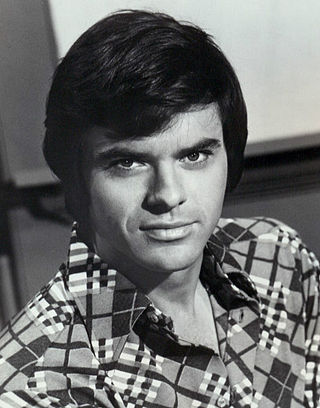
Robert Michael Urich was an American film, television, and stage actor and television producer. Over the course of his 30-year career, he starred in a record 15 television series.
Cattle mutilation is the killing and mutilation of cattle under supposedly unusual, usually bloodless circumstances. This phenomenon has been observed among wild animals as well. Worldwide, sheep, horses, goats, pigs, rabbits, cats, dogs, bison, moose, deer and elk have been reported mutilated with similar bloodless excisions; often an ear, eyeball, jaw flesh, tongue, lymph nodes, genitals and rectum are removed.
Benjamin "Ben" Urich is a fictional character appearing in American comic books published by Marvel Comics. The character usually appears in comic books featuring Daredevil and Spider-Man.
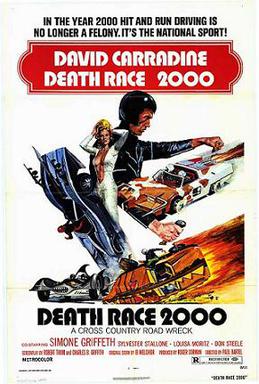
Death Race 2000 is a 1975 American dystopian science-fiction action film directed by Paul Bartel and produced by Roger Corman for New World Pictures. Set in a dystopian American society in the year 2000, the film centers on the murderous Transcontinental Road Race, in which participants score points by striking and killing pedestrians. David Carradine stars as "Frankenstein", the leading champion of the race, who is targeted by an underground rebel movement seeking to abolish the race. The cast also features Simone Griffeth, Sylvester Stallone, Mary Woronov, Martin Kove, and Don Steele.
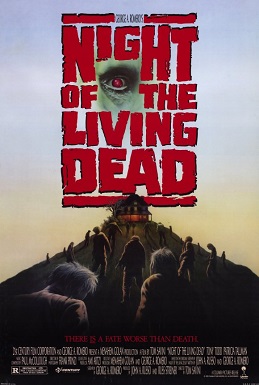
Night of the Living Dead is a 1990 American horror film directed by Tom Savini and starring Tony Todd and Patricia Tallman. It is a remake of George A. Romero's 1968 film of the same title; Romero rewrote the original 1968 screenplay he had originally co-authored with John A. Russo.

Broken Lance is a 1954 American Western film directed by Edward Dmytryk and produced by Sol C. Siegel. The film stars Spencer Tracy, Robert Wagner, Jean Peters, Richard Widmark and Katy Jurado.

Trapped is a 2002 crime thriller film directed by Luis Mandoki and starring Charlize Theron, Courtney Love, Stuart Townsend, Kevin Bacon, Dakota Fanning and Pruitt Taylor Vince. Based on Greg Iles' bestselling novel 24 Hours, it follows a wealthy Portland, Oregon, couple whose daughter is kidnapped by a mysterious man and his wife who demand a ransom for unclear reasons.

Disorganized Crime is a 1989 American heist comedy film. It was written and directed by Jim Kouf and released through Touchstone Pictures. The ensemble cast includes Fred Gwynne, Lou Diamond Phillips, Rubén Blades, William Russ, Corbin Bernsen, Ed O'Neill, Daniel Roebuck and Hoyt Axton.
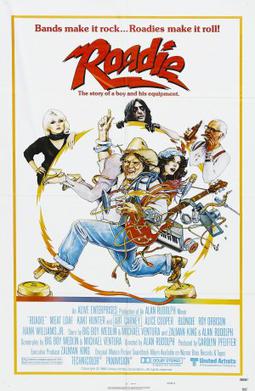
Roadie is a 1980 American musical comedy film directed by Alan Rudolph about a truck driver who becomes a roadie for a traveling rock and roll show. The film stars Meat Loaf and marks his first starring role in a film. There are also cameo appearances by musicians such as Roy Orbison and Hank Williams Jr. and supporting roles played by Alice Cooper and the members of Blondie.

Critters is a 1986 American science fiction comedy horror film directed by Stephen Herek in his directorial debut, and co-written with Domonic Muir. It stars Dee Wallace, M. Emmet Walsh, Billy "Green" Bush and Scott Grimes in his film debut. The plot follows a group of small, furry aliens with carnivorous behavior escaping from two shape-shifting bounty hunters, landing in a small countryside town to feast on its inhabitants.

The black helicopter is a symbol of an alleged conspiratorial military takeover of the United States in the American militia movement, and has also been associated with UFOs, especially in the UK, men in black, and similar conspiracy theories.

Santa Claus Is Comin' to Town is a 1970 American stop-motion Christmas television special produced by Rankin/Bass Productions in New York, New York. The film is narrated by Fred Astaire and stars the voices of Mickey Rooney, Keenan Wynn, Robie Lester, Joan Gardner, and Paul Frees, as well as an assistant song performance by the Westminster Children's Choir. The film tells the story of how Santa Claus and several Claus-related Christmas traditions came to be. It is based on the hit Christmas song, "Santa Claus Is Comin' to Town", which was written by J. Fred Coots and Haven Gillespie for Leo Feist, Inc. and introduced on radio by Eddie Cantor in 1934; and the story of Saint Nicholas.
Remote is a 1993 American comedy film that was released directly to video on September 22, 1993, by Paramount Pictures through Moonbeam Entertainment. It stars Chris Carrara, Jessica Bowman, and John Diehl. Ted Nicolaou directed the films and it was written by Mike Farrow, best known for his hard-boiled detective persona Tommy Sledge. It is the second film to be released by Moonbeam Entertainment, following Prehysteria! (1993).

The She Beast, also known as Revenge of the Blood Beast, is a 1966 horror film written and directed by Michael Reeves in his directorial debut. The film stars Barbara Steele, John Karlsen and Ian Ogilvy.

The Poughkeepsie Tapes is a 2007 American pseudo-documentary horror film written, directed, and edited by John Erick Dowdle from a story he co-wrote with his brother Drew Dowdle. It revolves around a serial killer's murders in Poughkeepsie, New York, told through interviews and footage from a cache of the killer's snuff films.

Madman is a 1981 American slasher film written and directed by Joe Giannone and starring Gaylen Ross and Paul Ehlers. The plot focuses on an axe-wielding murderer named Madman Marz who, after accidentally being summoned by a group of campers during a campfire tale, begins to stalk and murder the young adults.

Banana Joe is a 1982 Italian-German comedy film directed by Steno and starring Bud Spencer. Set in South America, the film was noted for its libertarian overtones and is remembered for Spencer's performance despite retrospective mixed appraisal.
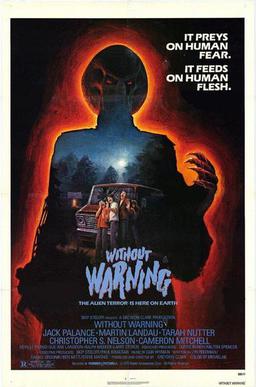
Without Warning is a 1980 American science fiction horror film directed and produced by Greydon Clark. The film stars Jack Palance, Martin Landau, Tarah Nutter, Christopher S. Nelson, Kevin Peter Hall, Neville Brand and Ralph Meeker in his final film role. It centers on an alien lifeform that arrives on Earth in order to stalk and kill humans as game. It was released by Filmways Pictures on September 19, 1980.

Vigilante, later released on video as Street Gang, is a 1982 American vigilante film directed by William Lustig and starring Robert Forster and Fred Williamson. Lustig came upon the idea for the film through a news article about "a group of blue collar workers in southern New Jersey who had organized to fight crime in their neighborhood".

Wrong Turn 5: Bloodlines is a 2012 American slasher film written and directed by Declan O'Brien. The film stars Doug Bradley, Camilla Arfwedson, Simon Ginty, Roxanne McKee, Paul Luebke, Oliver Hoare, and Kyle Redmond Jones. It is the fifth installment in the Wrong Turn film series, and is both a sequel to Wrong Turn 4: Bloody Beginnings (2011), and a prequel to Wrong Turn (2003).

















